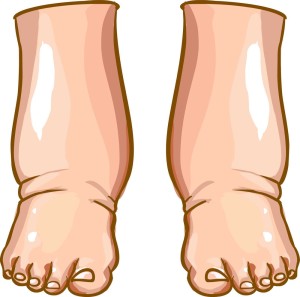Pedal edema, also called leg swelling, is a common problem. Learn more about it in this article.
A large number of patients who come to see us at our practice often complain that their legs are swollen. The swelling is often painless but can be rather troublesome, interfering with their daily activity.
Swelling of both the legs due to accumulation of fluid is called pedal edema. There can be a number of reasons why a patient could develop pedal edema and in this article, we shall take a look at this a bit further.
What causes pedal edema?
 The most common reason why pedal edema develops is because of a reaction to inflammation or injury. Patients may notice that their legs are swollen if they have bumped up against a table, twisted ankle or have developed some form of skin infection. Of course, these are not the only causes for pedal edema and it can result from a number of different medical conditions as well. Let’s take a look at this a bit further.
The most common reason why pedal edema develops is because of a reaction to inflammation or injury. Patients may notice that their legs are swollen if they have bumped up against a table, twisted ankle or have developed some form of skin infection. Of course, these are not the only causes for pedal edema and it can result from a number of different medical conditions as well. Let’s take a look at this a bit further.
- Gallbladder Stones – Do I Need Surgery? - April 18, 2021
- Urine Infection? Causes, Treatment & Prevention - July 15, 2020
- Vitamin D – All You Need To Know - July 11, 2020